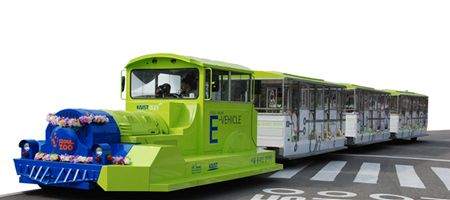What’s being called the world’s first On-Line Electric Vehicle (OLEV) has been introduced in Seoul.
Rather than carrying batteries, the little train is powered via strips buried a foot under the surface of the road. The strips only need to cover a fifth of the journey to the vehicle moving, and developer KAIST suggests that installing them at bus stops, parking lots and intersections could be enough.

The strips, which are connected to the national grid, provide power to the vehicle wirelessly, powering its motor and also charging a small battery – one-fifth the size of those used in most electric vehicles. KAIST points out that this saves a lot of time and avoids the need for charging stations.
“This technology solves many of the issues related to the current batteries of electric vehicles, including size, expense, and maintenance. In addition, non-contact charging is safer because it prevents potential electrical hazards, such as electric shock, that result from direct contact with power sources,” say the developers.
“Furthermore, it is more convenient to drive vehicles without overhead wires directly connected to power lines, as is necessary for streetcars and trams.”
The basic technology’s been around for a while, but health concerns over electromagnetic radiation meant it was never adopted. But KAIST says its system only delivers power as annd when required, and that EMF test results conform to official guidelines.







